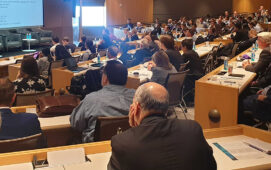
The New York edition of A-Team Group’s highly successful RegTech Summit is today and we caught up with Rob McGowan, Head of Sales for North America, RegTek Solutions to hear his views on how regtech can help support and improve regulatory reporting.
What does RegTech mean to you?
Combining microservice technology and regulatory expertise to provide pragmatic solutions.
What problem does the financial institution have that you believe you can solve?
Put simply: Data quality. Over the past decade, financial institutions have had to keep pace with an increasing number of new and evolving trade and transaction reporting requirements and have struggled to provide the regulators with the data it needs to fulfil its transparency mandate. The regulators have explicitly called for firms to implement controls to improve the accuracy and completeness of their data, but most firms still rely on inefficient ad-hoc and manual processes.
Why do they have this problem?
A mixture of external and internal issues. On one hand, firms face an increasing number of economic, political, and infrastructural market reforms. And on the other hand, they have internal issues such as legacy systems and complex trade lifecycle processes. This combination of challenges has made the effort and cost of complying with new regulations immense.
What regulations are of primary concern to you and your customers?
Our customers operate globally which means all trade and transaction reporting regulations! In North America, we’ve been busy working on helping firms deal with CFTC requirements for part 43 and 45 of the Dodd-Frank Act, as well as keeping a close eye on developments with the SEC’s Securities Based Swap Reporting (SBSR) and Consolidated Audit Trail (CAT). In Europe, the big focus this year has obviously been MiFID II but re-writes and ongoing teething issues still put EMIR and MiFIR on top of the regulatory agenda. A lot of firms have also started their SFTR project, which our flagship validation software Validate.Trade already supports. The DTCC GTR 2.0 re-architecture requirements have also been a primary concern, as well as other regulations such as HKMA, MAS and JFSA, but the list would be too long!
How do you solve it?
We solve our clients’ challenges by mutualizing the cost and burden of building and maintaining intelligent reporting systems. All our solutions are backed by a Service Level Agreement (SLA) to stay up to date with the latest regulatory requirements. We have a modular and cost-effective offer, which provides clients with the controls they need to build a compliant and robust regulatory reporting framework.
What technology do you use?
HTML5/Java script and an Oracle back end. Also REST or JMS application programming interfaces (APIs). But the strength of our offer lies in the regulatory intelligence we’ve built, always using best-of-breed technology.
How do you fit into a financial institutions architecture and data flows?
We support both hosted SAAS (Software As A Service) solutions as well as locally installed and integrated versions for clients that prefer to keep the solution and data flow within their own architectures. We also provide well-documented APIs that our clients can map to their internal source data creating entry points for each control.
What type of people are you hoping to meet at the Summit?
Hoping to meet people who are interested in discussing their needs for Trade and Transaction reporting and their current approach to improving their controls.
Subscribe to our newsletter




